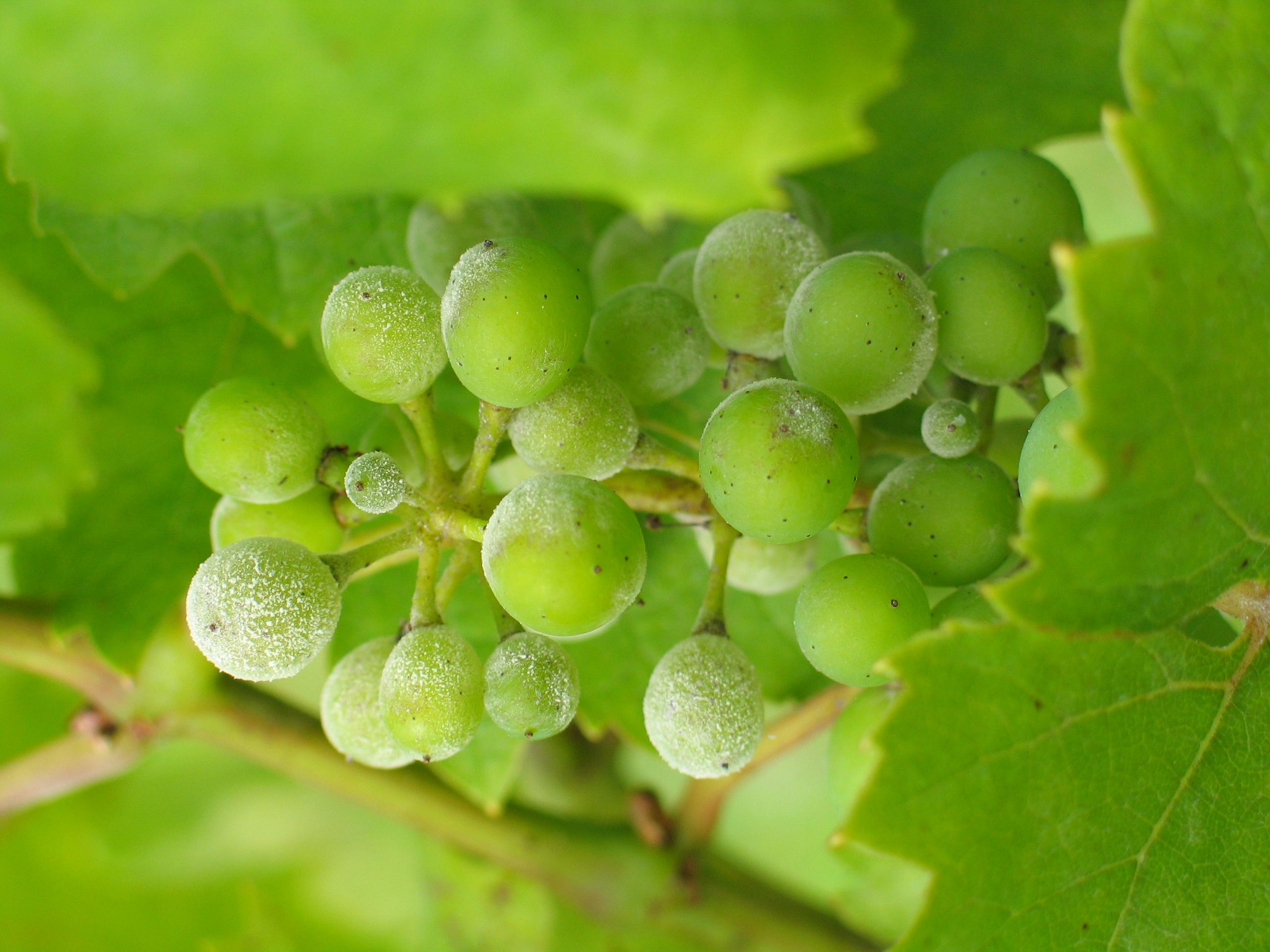
Powdery mildew
Erysiphe necator
What is Powdery mildew (Erysiphe necator)?
Powdery mildew, caused by the fungus Erysiphe necator (formerly Uncinula necator), is a significant grapevine disease worldwide. Over time, if left untreated, it can lead to cold injury, premature vine death, and negative impacts on grape quality. Infected grape berries are prone to skin cracks, making them more susceptible to Botrytis bunch rot and spoilage organisms, resulting in compromised fruit quality. Even a small percentage (3-5%) of powdery mildew-infected grapes at harvest can have a detrimental effect on wine quality.
How does Powdery mildew (Erysiphe necator) occur?
Powdery mildew survives winter in buds or bark crevices and infects new leaves during bud break. It spreads through wind-dispersed ascospores in spring. Rain or irrigation triggers spore release, infecting vulnerable plants. Additional conidia spores are produced during the growing season, spreading the disease. It prefers temperatures of 68-85°F and humidity of 60-90%.
Symptoms
1 - Impact on Grapevine Plants
It limits sunlight, impairing sugar and nutrient production. Vines weaken and have reduced photosynthetic capacity. This leads to lower grape yields and compromised fruit quality. Weakened vines are also more vulnerable to cold damage, potentially resulting in vine death.
2 - Impact on Soil and Environment
Powdery mildew, impacts the soil and environment. Fallen infected leaves aid in nutrient cycling. However, uncontrolled spread affects multiple plants and promotes other diseases and pests.
Solutions
1 - Resistance cultivars And Management
1. Effective scouting and early detection of powdery mildew help in managing the disease. 2. Selecting grapevine cultivars with resistance to powdery mildew can aid in disease management. Hybrid cultivars often offer better resistance than Vitis vinifera. 3. Plant vines with sufficient spacing to prevent overcrowding, allowing for better air circulation and reducing disease susceptibility.
2 - Timely Leaf Removal and Good Airflow
• Judicious leaf removal, done before veraison (fruit ripening), improves air circulation, reduces humidity, and enhances spray penetration. • Planting in locations with good airflow and implementing strategic pruning, trellising, and canopy management.
3 - Treatments
Some of the common fungicides used to control Powdery mildew 1. Inspire Super (Difenoconazole + Cyprodinil) 2. Quintec (Quinoxyfen) 3. Mettle (Tebuconazole) 4. Sonoma 2EW (Myclobutanil) 5. Pristine (Pyraclostrobin + Boscalid) 6. Aprovia (Benzovindiflupyr) 7. Aprovia TOP (Benzovindiflupyr + Difenoconazole) 8. Luna Experience (Fluopyram + Tebuconazole) Take care not to exceed recommended application rates to mitigate resistance risks, read carefully and consult specialists before application.
